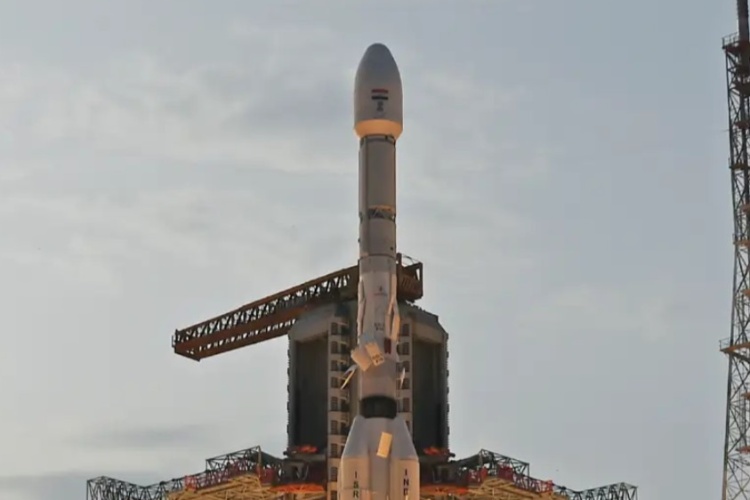
India’s space sector has come a long way since its modest beginnings, led by the Indian Space Research Organisation (ISRO). While the West continues to set global benchmarks through agencies such as NASA and the European Space Agency, India’s accomplishments have steadily carved out a niche. The Mars Orbiter Mission (Mangalyaan) remains emblematic — India became the first Asian nation to reach Mars orbit, and the first in the world to do so on its maiden attempt. These milestones point to a clear imperative: India must build on this momentum with stronger institutional capacity, technological autonomy, and policy coherence.
The recent launch of the NASA–ISRO Synthetic Aperture Radar (NISAR) satellite from the Satish Dhawan Space Centre marks a significant chapter in bilateral cooperation. This follows the participation of Indian gaganaut Shubhanshu Shukla in the Axiom-4 mission to the International Space Station — another first for India. These developments come in the wake of India signing the Artemis Accords in 2023, aligning itself with a set of US-led principles for the peaceful exploration and use of outer space.
READ | YouTube’s pay-per-view model challenges OTT giants
While these steps have been celebrated as breakthroughs, they also raise a deeper question: is India leveraging these partnerships to build self-reliance, or is it inadvertently reinforcing dependence? The answer lies in how these collaborations are managed and whether they are accompanied by corresponding domestic investments in core technology.
ISRO’s legacy of frugal innovation
ISRO has built its reputation on achieving scientific excellence within tight fiscal constraints. Missions such as Chandrayaan and Mangalyaan demonstrated that world-class outcomes are possible even with limited resources. These successes have attracted international admiration and positioned India as a cost-effective launch partner, particularly through its Polar Satellite Launch Vehicle (PSLV) programme.
Yet, even as ISRO expands its international footprint, the dependence on foreign partners for key technological components remains. The NISAR mission, while a success, relied heavily on NASA for the L-band radar payload — a critical component. Such dependencies undermine India’s strategic autonomy and limit the potential for its private space sector to mature beyond launch services.
NASA’s changing role in a shifting landscape
For decades, NASA has served as the gold standard in space exploration. However, the landscape is evolving. The emergence of commercial players like SpaceX has upended traditional hierarchies. Elon Musk’s company has redefined cost-efficiency and scalability through reusable rockets and the ambitious Starship programme. In contrast, NASA’s own Space Launch System has faced delays, technical challenges, and cost overruns.
Moreover, NASA’s future direction remains vulnerable to political cycles. Reports suggest that the incoming Trump administration may once again reduce NASA’s budget, as seen during the former president’s first term. A reduced budget could curtail joint missions and hinder continuity in collaboration. This introduces an element of uncertainty for international partners like India, whose plans could be destabilised by the changing priorities of another country’s domestic politics.
Domestic capability must be the strategic priority
Against this backdrop, India must recalibrate its strategic priorities. A cooperative framework with NASA and other international partners has its merits, particularly in areas like human spaceflight and scientific payload sharing. However, the long-term vision must be focused on developing core capabilities at home.
India does not lack talent, nor does it lack financial resources. The country has a growing pool of private space start-ups — Skyroot Aerospace, AgniKul Cosmos, and Pixxel, among others — that are demonstrating technological sophistication and innovation. Encouraging joint development between ISRO and these start-ups, with the right regulatory and fiscal support, could yield a new era of indigenous capability.
Developing proprietary systems—especially in key technologies like radar imaging, cryogenic engines, and satellite miniaturisation — would also shield India from the export controls and intellectual property restrictions that often accompany Western partnerships. More importantly, it would allow India to define its own path in space science and applications, from deep-space missions to climate monitoring.
A case for institutional strengthening
ISRO remains a respected global institution, but its future effectiveness will depend on how well it adapts to a rapidly changing environment. It must not only expand technical capabilities but also evolve its organisational structure to better interface with the private sector and academia.
India’s satellite applications — ranging from meteorology to disaster response and defence — are too critical to be left to external procurement. Developing a vertically integrated space ecosystem would enable ISRO to meet national priorities while also building export capacity. The success of PSLV in launching over 380 foreign satellites is proof that India’s space services can be globally competitive, even without leaning on NASA.
Broadening the arc of partnerships
At the same time, India is right to explore partnerships beyond the United States. Talks are under way with Australia on space cooperation, particularly in areas such as climate monitoring, remote sensing, and deep-space exploration. These diversified collaborations reduce strategic over-dependence on a single partner and create a more balanced space diplomacy strategy. They also reflect growing recognition among international stakeholders that India is not merely a junior partner but a serious player in global space affairs.
India must decide whether it will continue to operate in the shadow of agencies like NASA, or whether it will build the institutional and technological backbone to walk alone.
Partnerships with global powers may open doors, but true leadership in space will come from the ability to innovate, manufacture, and launch independently. That requires a clear policy vision, long-term public investment, and a regulatory ecosystem that encourages private participation.
India has already demonstrated what it can achieve on its own. The task now is to invest in that capability, broaden its horizons, and move beyond symbolic cooperation. The cosmos will not wait for consensus. Nor should India.
